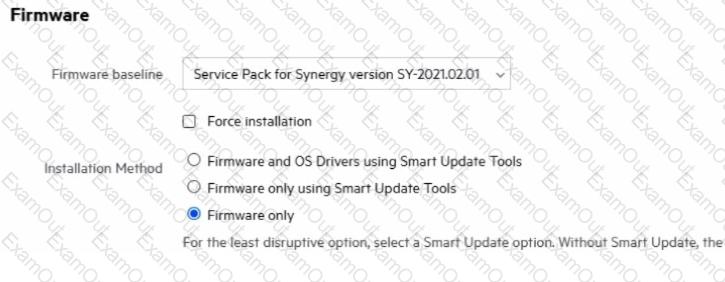After replacing a failed Compute Module, you notice the server profile Is not automatically assigned to the replaced server hardware. What can cause this issue?
Which statement about a logical enclosure support dump is true?
Your customer wants to add a rack system to HPE OneView. How can this task be completed?
You originally configured boot mode for HPE ProLiant Gen10 server to ‘Legacy BIOS’ in an HPE OneView server profile and deployed an operating system. A few weeks later, you change the boot mode to the ‘UEFI optimized’ to leverage some features provided by this mode.
What must you do next?
How is HPE Storage Integration Pack for VMware vCenter deployed?
As a part of troubleshooting, you have to reinstall the same version of the firmware on an HPE Synergy Compute Module. Click the area within the Firmware section of the server profile that will allow you to install the same firmware version.

Which of the following is a characteristic of the RoCE network type?
what is required to add a remote frame to the primary management ring?
Your customer has an environment with five HPE Synergy Composers and 15 HPE OneView appliances managing servers that run VMware. The customer is having a hard time managing their servers.
What can the customer do to simplify management of this complex environment?
Which statement about M-LAG setup is true?


